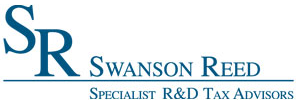OHIO INVENTIONINDEX | JULY 2025
July 2025: 3.83% (A+ grade)

Ohio inventionINDEX July 2025: 3.83% (A+ grade)
The inventionINDEX measures innovation output by comparing GDP growth with patent production growth.
Anything over C grade is positive sentiment; anything under C is negative outlook/sentiment. Using that sentiment, it is possible to observe trends over time, and also compare states/countries. In doing so, we can predict which states have the best chance to recover economically from the pandemic (or any other economic incident that may occur).
Ohio inventionINDEX Scores – Last 12 months
| Month | inventionINDEX Score |
| July 2025 | 3.83% |
| Jun 25 | 1.50% |
| May 25 | 2.25% |
| Apr 25 | 1.75% |
| Mar 25 | 0.91% |
| Feb 25 | 2.23% |
| Jan 25 | 2.00% |
| Dec 24 | 2.54% |
| Nov 24 | 0.89% |
| Oct 24 | 3.09% |
| Sep 24 | 1.34% |
| Aug 24 | 1.34% |
| Jul 24 | 3.47% |
This historical table provides a compelling look at the fluctuating performance of the Ohio inventionINDEX over the past five years. The most recent score for July 2025 stands at an impressive 3.83% with an A+ rating, marking a significant rebound from the previous month’s C+ and the C- rating in March. While this is a strong performance, it is also part of a larger pattern of volatility. The index has reached similar heights before, such as in April 2024 (4.11%) and July 2024 (3.47%), but has also experienced periods of deep decline, most notably the negative score of -3.17% in February 2021, which resulted in an F rating. This suggests that the state’s innovation ecosystem, while capable of producing top-tier results, is not without its challenges.
A high inventionINDEX score and a corresponding top-tier rating like A+ or A- reflect a thriving environment for innovation and economic growth. A strong score can attract investment, as it signals a fertile ground for new ideas and commercially viable inventions. Furthermore, a high rating enhances a state’s reputation as a leader in technology and intellectual property, which in turn attracts skilled professionals and innovative companies. These factors collectively contribute to a robust economy, create high-value jobs, and foster a culture of forward-thinking progress that benefits the entire community.
Conversely, a lower inventionINDEX score and a poor rating carry negative implications for the state’s innovation landscape. A score in the C or D range, or a failing grade, can be a warning sign of declining research and development activity, a loss of institutional support for new ideas, or a weakening entrepreneurial spirit. Such a trend could lead to a less competitive economy, as other regions with higher innovation scores may draw away key talent and business investment. Over time, a sustained period of low scores could hinder economic diversification and make it more difficult for the state to adapt to future technological and market shifts.
Ultimately, the historical data highlights the dynamic nature of Ohio’s invention landscape. The scores demonstrate a recurring cycle of peaks and valleys, with periods of exceptional performance followed by months of more modest results. The challenge for policymakers and business leaders is not only to celebrate the high scores but also to understand and address the factors that contribute to the lower-rated months. A focus on stabilizing performance and mitigating the deep declines could pave the way for a more consistent and resilient innovation ecosystem in the future.
Discussion:
In July, the Ohio inventionINDEX scored a positive sentiment which was higher than the previous year’s average and outperformed the upward trend for the year. This is in contrast to the prior 12 months, which experienced a considerable downward trend.
As the economy continues to stabilize in the post-pandemic era, it remains uncertain whether any backlog of applications still exists or if the department has returned to normal processing timelines. The inventionINDEX could also be affected by lingering consequences from the pandemic, such as company closures, reduced workforces, and limited R&D capabilities, which may still be impacting current operations.
Learn More:
Are you thinking of patenting any of your bright ideas? Did you know your research work could be eligible for the R&D Tax Credit and you can receive up to 14% back on your expenses? To find out more, please check out our free online eligibility test.
Swanson Reed’s Ohio office provides R&D tax credit consulting and advisory services to Columbus, Cleveland, Cincinnati, Toledo, Akron, Dayton, Parma, Canton, Youngstown, Lorain, Hamilton, Springfield, Kettering, Elyria, Lakewood, Cuyahoga Falls, Middletown, Euclid, Newark and Mansfield.
Feel free to book a quick teleconference with one of R&D tax specialists if you would like to learn more about R&D tax credit opportunities.
Who We Are:
Swanson Reed is the largest Specialist R&D tax credit advisory firm in the United States. With offices nationwide, we are one of the only firms globally to exclusively provide R&D tax credit consulting services to our clients. We have been exclusively providing R&D tax credit claim preparation and audit compliance solutions for over 30 years.
Swanson Reed hosts daily free webinars and provides free IRS CE and CPE credits for CPAs. For more information please visit us at www.swansonreed.com/free-webinars or contact your usual Swanson Reed representative.
What is the R&D Tax Credit?
The Research & Experimentation Tax Credit (or R&D Tax Credit), is a general business tax credit under Internal Revenue Code section 41 for companies that incur research and development (R&D) costs in the United States. The credits are a tax incentive for performing qualified research in the United States, resulting in a credit to a tax return. For the first three years of R&D claims, 6% of the total qualified research expenses (QRE) form the gross credit. In the 4th year of claims and beyond, a base amount is calculated, and an adjusted expense line is multiplied times 14%. Click here to learn more.
R&D Tax Credit Preparation Services
Swanson Reed is one of the only companies in the United States to exclusively focus on R&D tax credit preparation. Swanson Reed provides state and federal R&D tax credit preparation and audit services to all 50 states.
If you have any questions or need further assistance, please call or email our CEO, Damian Smyth on (800) 986-4725.
Feel free to book a quick teleconference with one of our national R&D tax credit specialists at a time that is convenient for you.
R&D Tax Credit Audit Advisory Services
creditARMOR is a sophisticated R&D tax credit insurance and AI-driven risk management platform. It mitigates audit exposure by covering defense expenses, including CPA, tax attorney, and specialist consultant fees—delivering robust, compliant support for R&D credit claims. Click here for more information about R&D tax credit management and implementation.
Our Fees
Swanson Reed offers R&D tax credit preparation and audit services at our hourly rates of between $195 – $395 per hour. We are also able offer fixed fees and success fees in special circumstances. Learn more at https://www.swansonreed.com/about-us/research-tax-credit-consulting/our-fees/
Choose your state

















